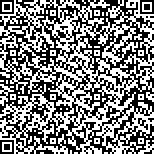| 本文已被:浏览 1562次 下载 1092次 |

码上扫一扫! |
| 龙泉山断裂带隐伏断层氡气特征及其活动性分析 |
| 刘亮1,2,梁斌1,2,燕中林2,3,李江涛1,4,应立朝2,杨鹏涛1,杨宇东1 |
|
|
(1. 四川省地矿局川西北地质队, 四川 绵阳 621010;
2. 西南科技大学环境与资源学院, 四川 绵阳 621010;
3. 贵州省交通规划勘察设计研究院股份有限公司, 四川 成都 610000;
4. 乐山市自然资源局, 四川 乐山 614000) |
|
| 摘要: |
| 龙泉山断裂构造带作为龙门山推覆带的前陆隆起,严格控制了成都平原东边界,其活动性历来受到人们的关注。通过对龙泉山断裂带的氡气进行测量,可以有效地判断隐伏断层的位置及其活动性。测量结果显示,龙泉山断裂带北段东坡活动性强于西坡,主断层的活动性明显强于边缘隐伏断层,4条断层的活动性由强到弱依次为合兴场断层 > 红花塘断层 > 龙泉驿断层 > 松林场断层。龙泉山断裂带同一条断层在地表由多个破碎带组成,其氡气异常特征与断层活动性和破碎带特征呈正相关性,即断层活动性越强,氡气异常特征越显著。龙泉山断裂带氡气平均异常浓度是背景值的9.6倍,将各异常带峰值浓度与背景值进行对比分析,大致归纳出了龙泉山地区隐伏断层活动性的相对判别标准。 |
| 关键词: 龙泉山断裂带 隐伏断层 氡气 活动性 判别标准 |
| DOI: |
| 附件 |
| 投稿时间:2018-11-02修订日期:2019-01-05 |
| 基金项目:中国地质调查局项目1∶25万成都幅区域地质调查项目(项目编号:1212010880704) |
|
| Soil gas radon and fault activity in the Longquanshan fault zone, Sichuan |
| LIU Liang1,2, LIANG Bin1,2, YAN Zhonglin2,3, LI Jiangtao1,4, YING Lichao2, YANG Pengtao1, YANG Yudong1 |
(1. Northeast Sichuan Geological Prospecting Party, Mianyang 621010, Sichuan, China;
2. School of Environments and Resources, Southwest University of Science and Technology, Mianyang 621010, Sichuan, China;
3. Guizhou Provincial Traffic Planning Exploration and Design Research Institute Co., Ltd, Chengdu 610000, Sichuan, China;
4. Leshan Bureau of Natural Resurces, Leshan 614000, Sichuan, China) |
| Abstract: |
| The Longquanshan fault zone as the foreland uplift of the Longmenshan nappe zone lies at the eastern boundary of the Chengdu plain, and has long been studied by the geologists concerning the activity of the faults in this zone. The measurement of the soil gas radon may be applied to determine the location and activity of the hidden faults. The measurements of radon in this paper show that there occurs stronger fault activity on the eastern slope than on the western slope, and in the major faults than in the surrounding hidden faults in the northern part of the Longquanshan fault zone. There is a positive correlation between the radon anomaly and fault activity. The average radon concentrations within the Longquanshan fault zone are generally 9.6 times higher than the background values in this area. On the whole, the Longquanshan fault zone is a slightly active to moderately active fault zone. |
| Key words: Longquanshan fault zone hidden fault radon fault activity diagnostic criteria |